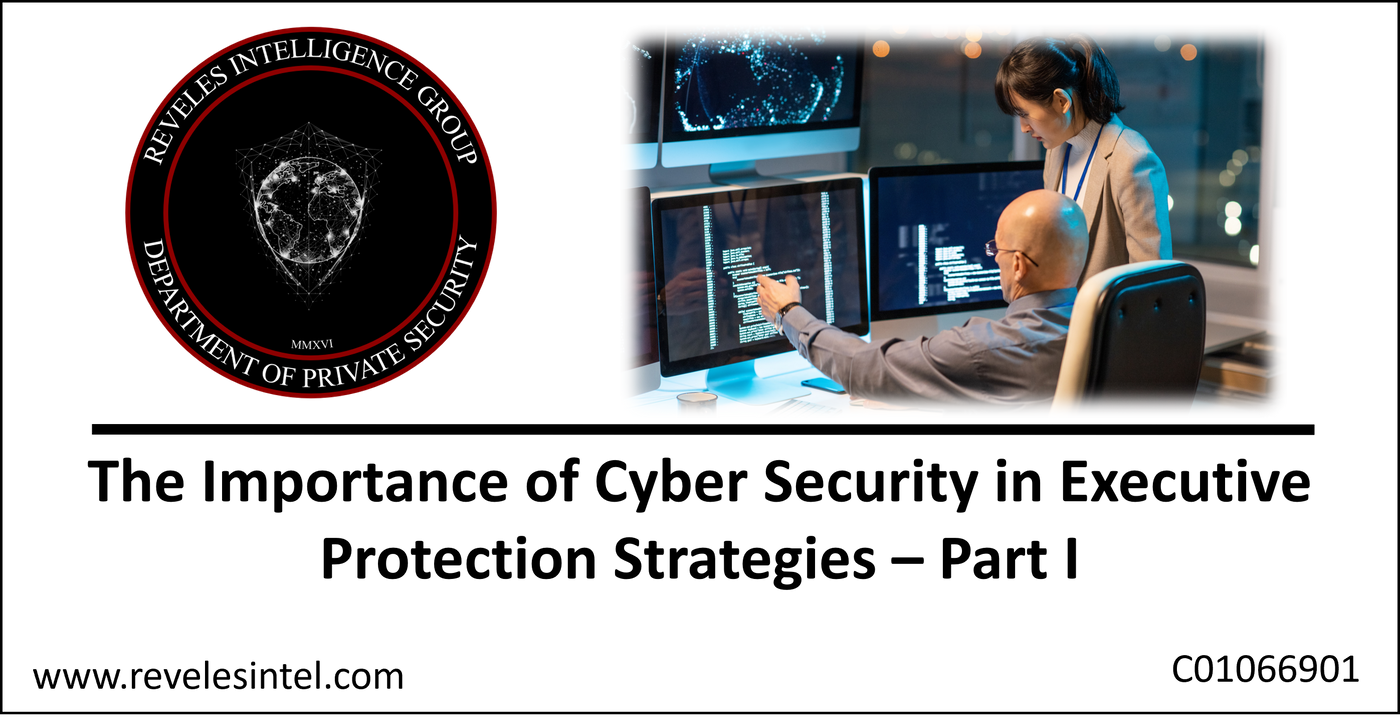Executive protection is a specialized field of security and risk management dedicated to safeguarding the safety and well-being of high-profile individuals, such as corporate executives, celebrities, diplomats, and other prominent figures, as well as their immediate families. This comprehensive discipline encompasses a range of proactive measures and security strategies designed to mitigate potential threats, including physical harm, kidnapping, harassment, and reputation damage. The primary objective of executive protection is to create a secure environment that allows individuals to carry out their professional and personal responsibilities without undue risk or disruption. Skilled executive protection professionals employ a combination of security protocols, advanced surveillance techniques, threat assessments, and meticulous planning to ensure the security of their clients in various settings, from public appearances to international travel.
In the digital age, the landscape of threats has evolved dramatically, introducing an intricate web of cyber risks that extend beyond the physical realm. As society becomes increasingly interconnected through technology, individuals under executive protection face a myriad of digital threats, such as cyberattacks, online harassment, data breaches, and reputation damage facilitated by the widespread use of social media and internet platforms. The rapidly changing digital environment poses challenges that necessitate a comprehensive understanding of online vulnerabilities, as well as the capacity to adapt security measures to counter these emerging threats effectively. Executive protection in the digital age requires a multifaceted approach that integrates traditional physical security with robust cybersecurity protocols to ensure comprehensive defense against evolving risks.
Understanding the Digital Threat Landscape:
Technology plays a dual role in executive protection, presenting both opportunities and challenges. On one hand, technological advancements have provided security professionals with powerful tools for threat assessment, surveillance, and communication. However, the same innovations have also introduced new vulnerabilities, as high-profile individuals' digital footprints become more accessible and exposed. The use of social media and online platforms can inadvertently reveal personal information, while cyberattacks and data breaches can jeopardize not only an individual's privacy but also their physical safety and reputation. As the digital age reshapes the nature of threats, executive protection specialists must continually adapt to navigate the intricate landscape of technology, harnessing its advantages while mitigating its inherent risks to ensure the comprehensive security of their clients.
Executives and their protection teams confront an array of cyber threats in today's digital landscape. These threats encompass not only data breaches and unauthorized access to sensitive information but also social engineering tactics, such as phishing attacks and spear phishing, aimed at deceiving individuals into divulging critical details. The risk of online harassment and stalking cannot be understated, with executive figures often becoming targets for cyberbullying and doxing, which can lead to personal and professional reputational damage. Furthermore, executives may face the threat of corporate espionage, where adversaries seek to compromise proprietary information for competitive advantage. The dynamic nature of cyber threats necessitates that protection teams remain vigilant in identifying and countering these risks to safeguard both the individual and the integrity of their organization.
Beyond the more overt cyber threats, executives and their protection teams must also contend with sophisticated forms of attack, such as advanced persistent threats (APTs) orchestrated by state-sponsored actors or well-organized cybercriminal syndicates. APTs involve persistent, long-term infiltration of an executive's digital environment, with the aim of stealing valuable data, conducting espionage, or undermining the target's influence. Additionally, ransomware attacks pose a growing menace, whereby malicious actors encrypt sensitive data and demand ransom payments for its release. The compromise of executive emails and online accounts can lead to fraudulent activities, including financial fraud and identity theft, posing severe financial and reputational risks. These multifaceted cyber threats underscore the need for not only robust cybersecurity measures but also a proactive and adaptive security posture in executive protection strategies, effectively mitigating the diverse challenges presented by the digital age.

